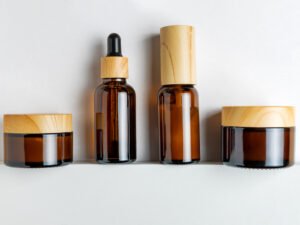Helix Aspersa snails, also known as common garden snails, are a type of land snail that can be found in many regions of the world. These snails are known for their distinctive spiral shells and their ability to produce a unique secretion that has been used in a variety of skincare products.
In this article, we will explore the habitat, characteristics, lifetime, feeding, breeding, and production of Helix Aspersa snails.
Habitat
Helix Aspersa snails are native to Europe, but they have been introduced to many other parts of the world, including North America, Australia, and New Zealand. These snails can be found in a variety of habitats, including gardens, fields, and forests. They are often considered pests because they can damage crops and gardens, but they are also important members of the ecosystem, serving as a food source for birds and other animals.
Characteristics
Helix Aspersa snails are characterized by their brownish-yellow shells, which are usually between 20 and 35 mm in diameter. The shells have a distinctive spiral shape and are composed of calcium carbonate. The snails themselves have a soft, slimy body that is protected by the shell. They have two pairs of tentacles, with the upper pair being longer and used for sensing their environment. Helix Aspersa snails are hermaphrodites, meaning that they have both male and female reproductive organs.
Lifetime
The lifespan of Helix Aspersa snails varies depending on a variety of factors, including their environment and level of predation. In general, these snails can live for several years in the wild, with some individuals reaching up to five years of age. However, their lifespan is often much shorter due to predation by birds, mammals, and other animals.
Feeding
Helix Aspersa snails are herbivores and feed primarily on vegetation, including leaves, flowers, and fruits. They are able to digest a wide variety of plant material, and their diet can vary depending on the availability of food in their environment. These snails are most active at night, when they emerge from their hiding places to feed.
Breeding
Helix Aspersa snails are hermaphrodites, meaning that they have both male and female reproductive organs. When two snails mate, they exchange sperm, and each snail is then able to fertilize its own eggs. After mating, the snails lay their eggs in small nests in the soil, where they hatch into small, translucent snails after a few weeks. These baby snails are vulnerable to predation, and many do not survive until adulthood.
Production
Helix Aspersa snails are a popular source of snail secretion filtrate, which is used in a variety of skincare products. To produce snail secretion filtrate, snails are placed in a controlled environment and allowed to move over a special surface, such as a mesh or a plastic sheet. As they move, they produce a slimy secretion that is collected and processed to create a concentrated extract. This extract is then used as an ingredient in a variety of skincare products, including serums, creams, and masks.
Health & beauty benefits of using Helix Aspersa Snails
Due to their numerous benefits, Helix Aspersa snails are becoming increasingly popular in the health and beauty industry. The secretion of these snails, also known as snail secretion filtrate, is packed with nutrients and minerals that can help to improve the overall health and appearance of your skin.
Snail mucin properties have been found to be beneficial for treating a variety of skin conditions, including acne, eczema, wrinkles, and sun damage. It can also help to reduce inflammation, promote cell regeneration and improve skin elasticity and hydration levels.
In addition to this, snail secretion filtrate has antibacterial properties which make it a great choice for fighting off bacteria-related skin problems such as acne breakouts.
Overall, Helix Aspersa snails offer a natural way to improve your skin’s health and appearance without the use of harsh chemicals or expensive treatments.
Therefore, Helix Aspersa snails are important members of many ecosystems around the world, and their unique characteristics and abilities have made them a valuable resource for the skincare industry.
While they are often considered pests, these snails play an important role in the food chain and contribute to the health of many ecosystems. By understanding more about their habitat, characteristics, lifetime, feeding, breeding, and production, we can gain a greater appreciation for these fascinating creatures and the many ways in which they contribute to our world.
Sources:
https://www.sciencedirect.com/topics/agricultural-and-biological-sciences/helix-aspersa








